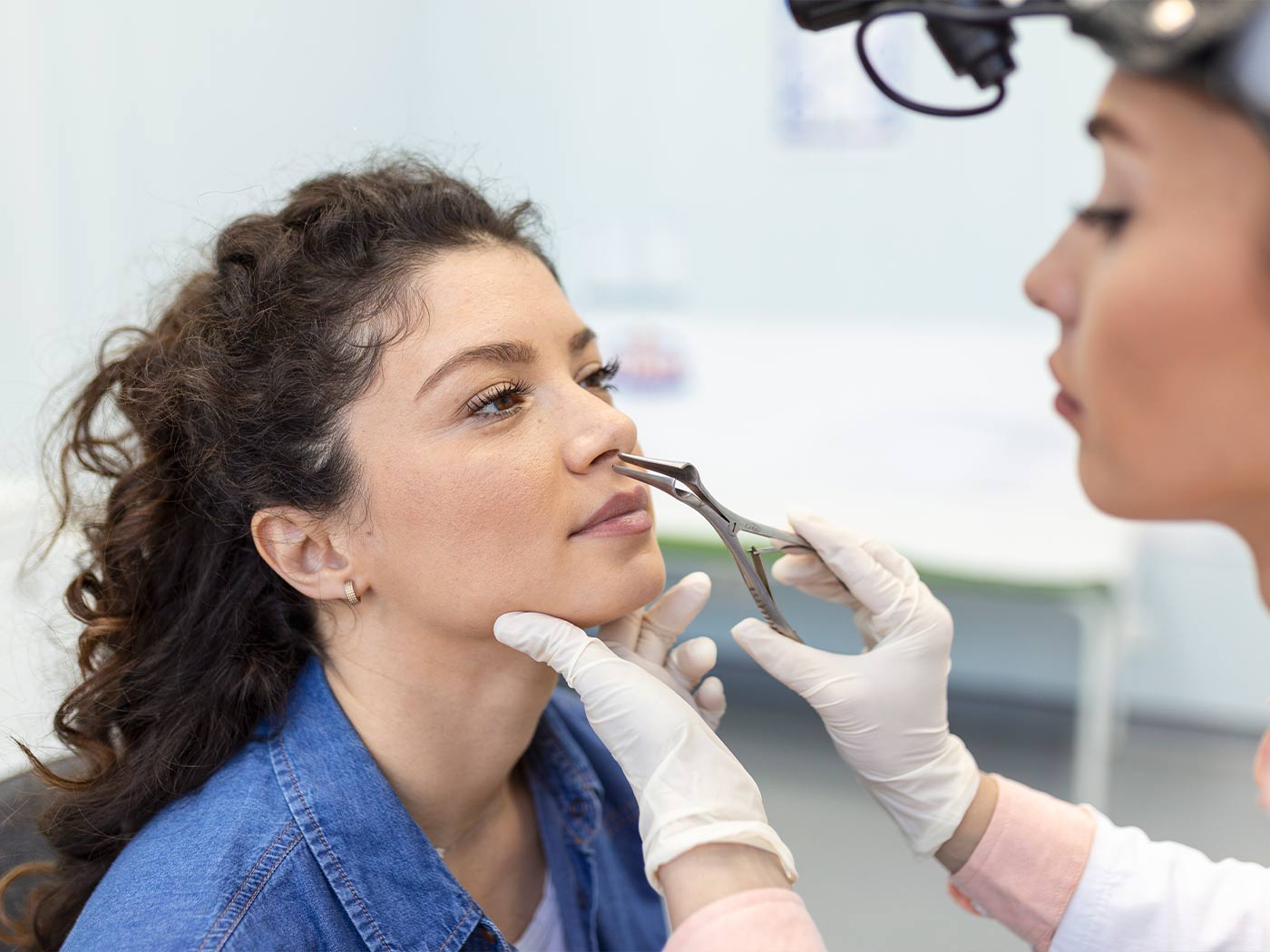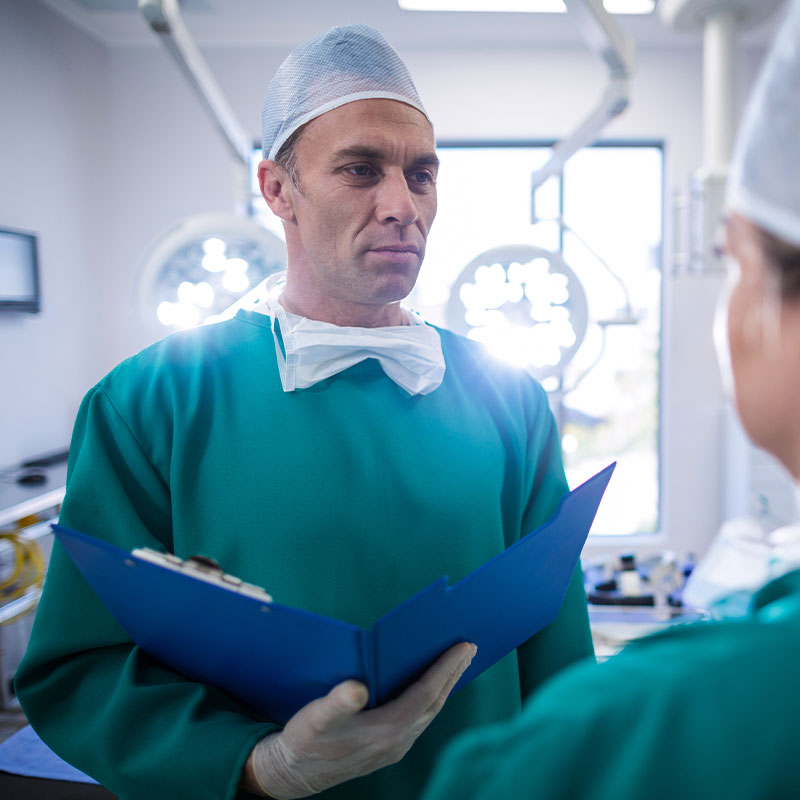

12.05.2025.
Removing nasal tampons after surgery
Removal of nasal tampons after surgery, Ljubljana. TOP PRICE✓ Rhinoplasty✓ Nose operation✓ Safe tampon removal✓ Professional care✓ Nose correction✓
Rhinoplasty, whether for aesthetic or functional reasons, often involves inserting a tampon into the nose to stabilize the nasal structures and stop bleeding. Tampon removal is an important step in the postoperative process.
Removing nasal tampons after surgery
Nose surgery, also known as rhinoplasty, is becoming an increasingly common choice, both for cosmetic correction and to address functional breathing problems. In some cases, patients choose this procedure to improve facial appearance, while in other cases, the surgery is performed to make breathing easier and improve quality of life.
Regardless of the reason, rhinoplasty most often involves inserting a nasal packing into the nose after the procedure to stabilize the nasal structures and reduce the possibility of bleeding.
Why are packings used after nose surgery?
After rhinoplasty – whether for cosmetic correction or reconstructive surgery – inserting a nasal packing is an important part of postoperative care. The packings are inserted into the nasal passages immediately after surgery and have several functions that directly affect the successful outcome of the procedure and the speed of recovery.
- Bleeding control: During nose surgery, various tissues and blood vessels are cut and moved, which can cause bleeding in the immediate postoperative period. The pads act as a physical barrier that helps to quickly stop bleeding by creating pressure in the nasal passages. This reduces the risk of hematoma, and the wound has the opportunity to begin healing properly without further complications.
- Stabilization of nasal structures: After the nose has been shaped during surgery, it is important that the new structures remain in a stable position while the tissues begin to grow together. The pads provide internal support for the nasal cartilage and septum, preventing them from moving, deforming, or collapsing. This stabilization is especially important in the early days of recovery, when the tissues are still delicate and susceptible to change.
- Infection prevention: The nose is a natural pathway for air and contact with the external environment, making it a potential entry point for bacteria. Swabs help protect freshly operated tissue from contamination. Today, modern, sterile pads with added antibiotics or moisturizers are often used, which further reduce the risk of infection and contribute to a more comfortable recovery.
Despite the possible discomfort, tampons are essential for the proper start of the healing process. Most patients experience relief and improved breathing immediately after removal, and removal is usually performed a few days after surgery under controlled conditions, without significant pain.
When and how are tampons removed?
Tampons are usually removed between the fifth and seventh days after surgery, as recommended by the surgeon. The removal procedure itself is quick and is performed in the office, often using local anesthesia.
Although it can be uncomfortable, tampon removal is not painful. Patients may feel pressure or mild discomfort, but the entire procedure only takes a few minutes. After this, breathing through the nose improves significantly and the recovery process enters a new phase.
Postoperative care after tampon removal
After tampon removal, it is important to follow your doctor's instructions carefully to ensure a smooth recovery:
- Avoid physical exertion: Intense physical activity is not recommended in the first few days after tampon removal.
- Maintain nasal hygiene: Proper and regular nasal irrigation as directed by your surgeon helps prevent infections and reduces swelling.
- Regular check-ups: Follow the schedule of scheduled check-ups so that your surgeon can monitor your recovery progress and respond to any changes in a timely manner.
Prices and services for nose surgery at our clinic
In Serbia, rhinoplasty prices vary depending on the type of procedure, the surgeon's expertise, and the reputation of the clinic.
Average prices are:
Full rhinoplasty: from €2,000 to €6,000
Nose tip correction: from €1,000 to €2,500
At Royal Plastic Surgery, we offer competitive prices with top-notch medical service:
- Full nose surgery: from €2,700 (regular price: €3,000)
- Nose tip surgery: from €1,100 (regular price: €1,300)
Estetska kirurgija na Royal Belgradeis synonymous with professionalism, modern technology and uncompromising dedication to each patient. Our team consists of top specialists in aesthetic and reconstructive surgery, who approach the individual needs of each client with care and understanding.
Thanks to the combination of many years of experience, the latest surgical techniques and sophisticated equipment, we ensure safety, natural results and faster recovery for our patients. Estetska kirurgija na Royal Belgrade Clinic is not just a medical procedure – it is a path to better self-confidence and quality of life.
Transparent prices and flexible packages make our services accessible to a wider range of patients without compromising quality. The trust that both domestic and foreign patients have shown us year after year is a confirmation of our reputation and results.
Interested in a consultation or more information about the procedures? Our team of experts is at your disposal to answer all your questions and help you make the right decision – with full support, discretion and professionalism.
How to schedule an appointment for rhinoplasty?
If you would like to schedule an appointment for rhinoplasty, inquire about the cost of the procedure, or have additional questions for us, please contact us at +381 65 202 77 77 or visit the following pages: Nose surgery, Nose tip surgery and Full nose surgery.
Royal Plastic Surgery
Why choose us?
The best, most affordable and safest aesthetic clinic in Ljubljana and Slovenia.

